Properties of Matter Worksheets
Grade 7 Science Worksheets
Properties of Matter Worksheets for Grade 7
Properties of matter refer to the characteristics and attributes that can be used to describe and identify different substances. These properties can be observed or measured and provide valuable information about the nature and behavior of matter. The properties of matter can be broadly categorized into two main types: physical properties and chemical properties.
Understanding the properties of matter is essential to unraveling the mysteries of the physical world around us.Our collection of worksheets is designed to cater specifically to grade 7 science curriculum standards, ensuring they align with your educational needs.
Volume
A three-dimensional measure of the size of a body or region.
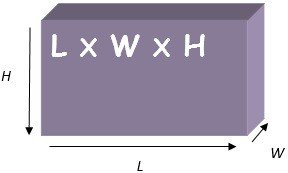
Meniscus
It is the curve at a liquid’s surface by which we measure the volume of the given liquid.
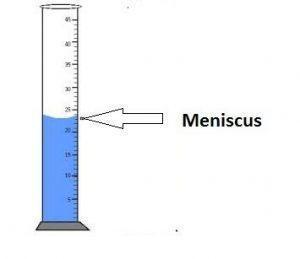
Weight
A measure of the gravitational force exerted on an object; its value can change with the location of the object in the universe.

Inertia
Any objects’ tendency to resist from being moved or, even though it is moving, to resist a change in speed or direction to the point where an outside force acts on the object.

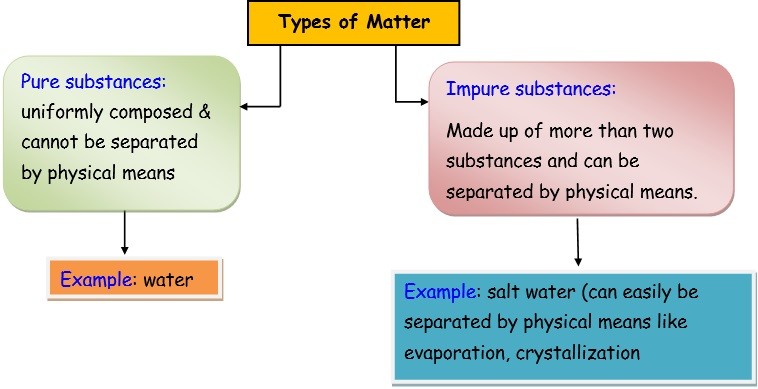
Metals are shiny, good conductors of heat and current, malleable and ductile.
Nonmetals are dull, bad conductors, brittle.
Metalloids are mix of metal and non metal properties.
Atoms can be further divided into smaller parts.
There are three main parts of an atom: the protons, neutrons and electrons. The protons and neutrons make up the middle part of the atom called the nucleus. The electrons are outside of the nucleus of the atom.

What are the two types of properties of matter?
Properties of matter can be divided in two ways – extensive/intensive or physical/chemical.
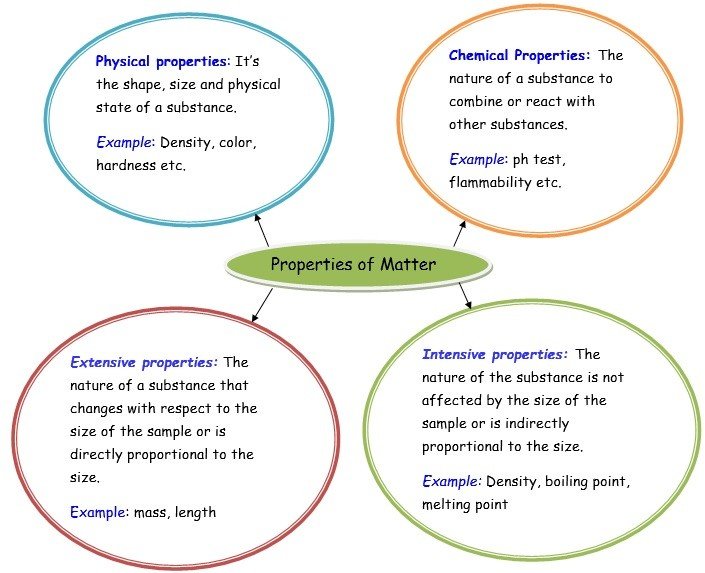
What are the properties of a solid, liquid and a gas?
We know that liquid has no definite shape and it takes the shape of the container in which it is poured. Liquid has a definite volume. When a liquid is heated, it changes to gaseous form.
In solids, molecules are arranged close to each other in a way where they cannot move but only vibrate.
In liquids, molecules are arranged in a way so that they can move freely. So, definitely molecules are loosely arranged in liquids than in solids.
In gases, molecules are arranged in a loose manner such that they can easily move quickly in all directions.
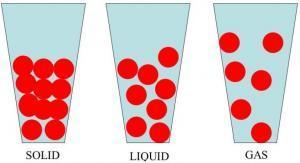
Learn more about Properties of Matter and other important topics with 7th Grade Science Tutoring at eTutorWorld. Our expert science tutors break down the topics through interactive one-to-one sessions. We also offer the advantage of customized lesson plans, flexible schedules and convenience of learning from home.
eTutorWorld Understands Math Tutoring | Online Math Worksheets are Important Tools
Understanding graphs, charts, and opinion polls in a newspaper, for calculating house and car payments, and for choosing a long-distance telephone service are impossible without strong math skills …and the only way to develop strong math skills is by constant practice.
‘Practice makes a man perfect’ holds true for no other field better than for math. A middle or high school student must set aside a minimum of an hour for math every day. Other than textbooks, worksheets help you revise and understand concepts better.
Our expert tutors prepare online maths worksheets that are age and grade-appropriate. Grade-wise math worksheets for Elementary Math, Arithmetic, Pre-Algebra, Algebra, Geometry, Trigonometry, Statistics, Pre-Calculus and Calculus can be solved to improve math skills, to get ahead or to even catch up.
You may download these FREE online math worksheets in the PDF format, and then print and email us their solutions for a free evaluation and analysis by eTutorworld’smath expert tutors.
You may solve these worksheets by yourself or with your peers while studying together.
The Answer Key at the end of each worksheet allows for a self-evaluation.
Personalized Online Tutoring
eTutorWorld offers affordable one-on-one live tutoring over the web for Grades K-12, Test Prep help for Standardized tests like SCAT, CogAT, MAP, SSAT, SAT, ACT, ISEE and AP. You may schedule online tutoring lessons at your personal scheduled times, all with a Money-Back Guarantee. The first one-on-one online tutoring lesson is always FREE, no purchase obligation, no credit card required.
For answers/solutions to any question or to learn concepts, take a FREE CLASS.
No credit card required, no obligation to purchase.
Just book a free class to meet a tutor and get help on any topic you want!
Check Point
A. Fill in the blanks:
- Matter is anything that has ……… and takes……….
- Matter which is uniformly composed and cannot be separated by physical means is………………………
- Physical composition of two or more pure substances which can be separated of physical means……………
- Physical properties are those which can be……….. and …………. without changing the substance.
- ………………. properties are the nature of a substance to combine or react with other substance.
B. State True or False
- The curve at a solid’s surface by which one measures the volume of the solid is called Meniscus.
- Mass is the amount of matter in an object.
- Volume – a measure of the size of a body or region in two-dimensional spaces.
- Inertia – the tendency of an object to resist being moved or, if the object is moving, to resist a change in speed or direction until an outside force acts on the object.
- Weight is the gravitational force acting on a body.
Answer Key
A. Fill in the blanks:
1) mass and space
2) Pure substances
3) Impure substances
4) observed and measured
5) Chemical
B. State True or False
1) False
2) True
3) False
4) True
5) True
What are the properties of matter?
Properties of matter are the characteristics and attributes that describe different substances. They can be classified into physical properties and chemical properties. Physical properties include characteristics like color, texture, density, and boiling point, while chemical properties describe how matter behaves in the presence of other substances and involve its ability to undergo chemical reactions.
Why are properties of matter important?
Properties of matter are important because they help us identify, classify, and understand different substances. They provide valuable information about how matter behaves under various conditions and allow scientists to study and manipulate materials for practical applications in fields such as engineering, medicine, and environmental science.
How are physical properties of matter different from chemical properties?
Physical properties of matter describe observable characteristics that can be measured without changing the substance’s chemical composition. Chemical properties, on the other hand, describe how matter interacts with other substances and involve its ability to undergo chemical reactions, which result in the formation of new substances with different properties.
Can properties of matter change?
Properties of matter can change under different conditions. For example, physical properties like melting point and boiling point can vary with changes in temperature and pressure. Chemical properties can also change when matter undergoes chemical reactions or transformations.
Pricing for Online Tutoring
| Tutoring Package | Validity | Grade (1-12), College |
|---|---|---|
| 5 sessions | 1 Month | $139 |
| 1 session | 1 Month | $28 |
| 10 sessions | 3 months | $269 |
| 15 sessions | 3 months | $399 |
| 20 sessions | 4 months | $499 |
| 50 sessions | 6 months | $1189 |
| 100 sessions | 12 months | $2249 |
IN THE NEWS

Our mission is to provide high quality online tutoring services, using state of the art Internet technology, to school students worldwide.
Online test prep and practice
SCAT
SSAT
ISEE
PSAT
SAT
ACT
AP Exam
Science Tutoring
Physics Tutoring
Chemistry Tutoring
Biology Tutoring
Math Tutoring
Pre-Algebra Tutoring
Algebra Tutoring
Pre Calculus Tutoring
Calculus Tutoring
Geometry Tutoring
Trigonometry Tutoring
Statistics Tutoring
Quick links
Free Worksheets
Fact sheet
Sales Partner Opportunities
Parents
Passive Fundraising
Virtual Fundraising
Our Expert Tutors
Safe and Secure Tutoring
Interactive Online Tutoring
After School Tutoring
Elementary School Tutoring
Middle School Tutoring
High School Tutoring
Home Work Help
Math Tutors New York City
Press
©2022 eTutorWorld Terms of use Privacy Policy Site by Little Red Bird
©2022 eTutorWorld
Terms of use
Privacy Policy
Site by Little Red Bird






